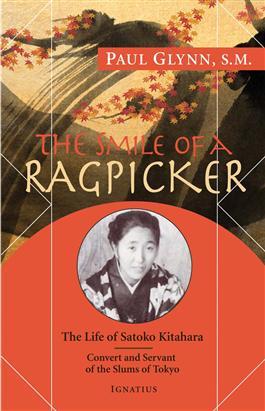The Surprising Riches of the Ragpicker

Servant of God Satoko Kitahara (Photo: Ann Maria Clara/Wikimedia Commons)
The Surprising Riches of the Ragpicker | K.V. Turley | CWR Book Review
Fr. Paul Glynn's The Smile of a Ragpicker: The Life of Satoko Kitahara is an excellent biography of a figure deserving to be better known in the West
Hagiography is oft not well served. In the case of Satoko Kitahara, however, she has been served perfectly by Paul Glynn, the author of The Smile of a Ragpicker: The Life of Satoko Kitahara—Convert and Servant of the Slums of Tokyo , recently published by Ignatius Press.
, recently published by Ignatius Press.
I suspect that most non-Japanese, such as myself, have heard little or nothing of the subject of this book. I also suspect they shall be as impressed as I am by the story it tells, and also as glad to be acquainted with the life so presented. And, given Pope Francis’ concerns for the poor and the marginalized, this biography and its message could not have come at a more apt time.
So, who was she? Satoko Kitahara was born August 22, 1929; hers was to be a conventional, middle class upbringing, stable and secure in its place in Japanese society and the wider world. Nevertheless, during her first years the nation was becoming the major power in Asia. Soon, however, it moved from national security to international instability as it propagated invasion and war as well as the war crimes that were hidden from the wider Japanese populace until after the war.
In fact, the book wisely starts not with recounting any idyllic childhood but by plunging the reader into the last desperate days of Japan’s fight against the Allies. One is left with a sense of communal madness: school girls brought to airstrips to bow at suicidal Kamikaze pilots while boys not much older than the girls bowing took off to fly planes carrying explosives straight into American ships.
As Japan began to lose the war there was a collective loss of any sense of balance. All was thrown into the last gasps of total war, with the Japanese code of honor refusing defeat, never mind surrender. It was a recipe for disaster, which was visited upon that nation on August 6, 1945, when a US bomber plane Enola Gay, set off from an airfield at Tinian with a payload that had until then been unimaginable, with consequences no nightmare could have prepared the citizens of Hiroshima for. When that city, and later Nagasaki (Japan’s most Catholic of cities), experienced something beyond any known human experience, the voice of the Emperor was heard for the first time on crackling wireless sets saying what just days before would have been unthinkable—Japan had surrendered.
Any biography of Kitahara could only make sense when placed fully in the context of these events and the mindset of the nation she came from at that particular stage of its history.
Carl E. Olson's Blog
- Carl E. Olson's profile
- 20 followers



